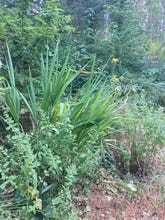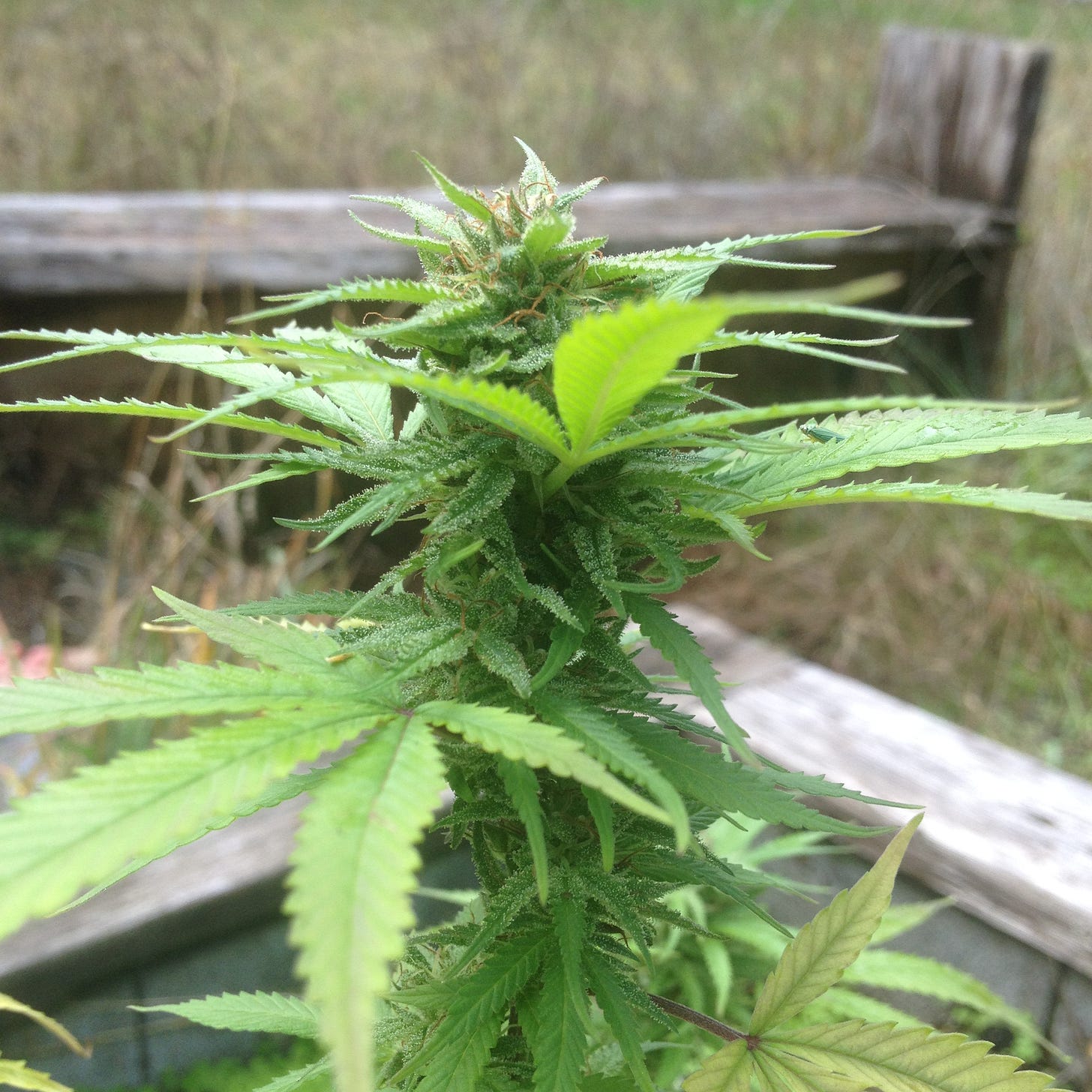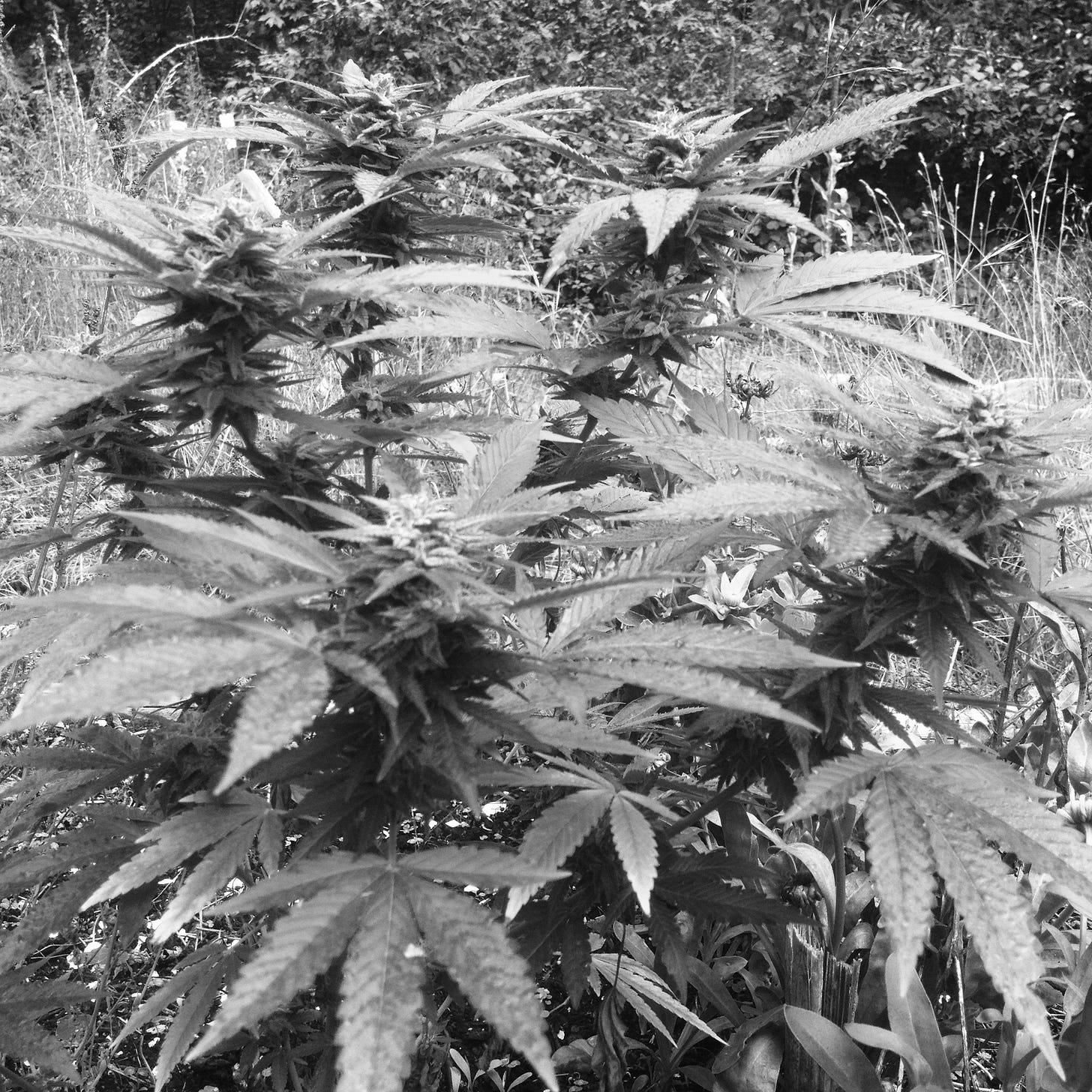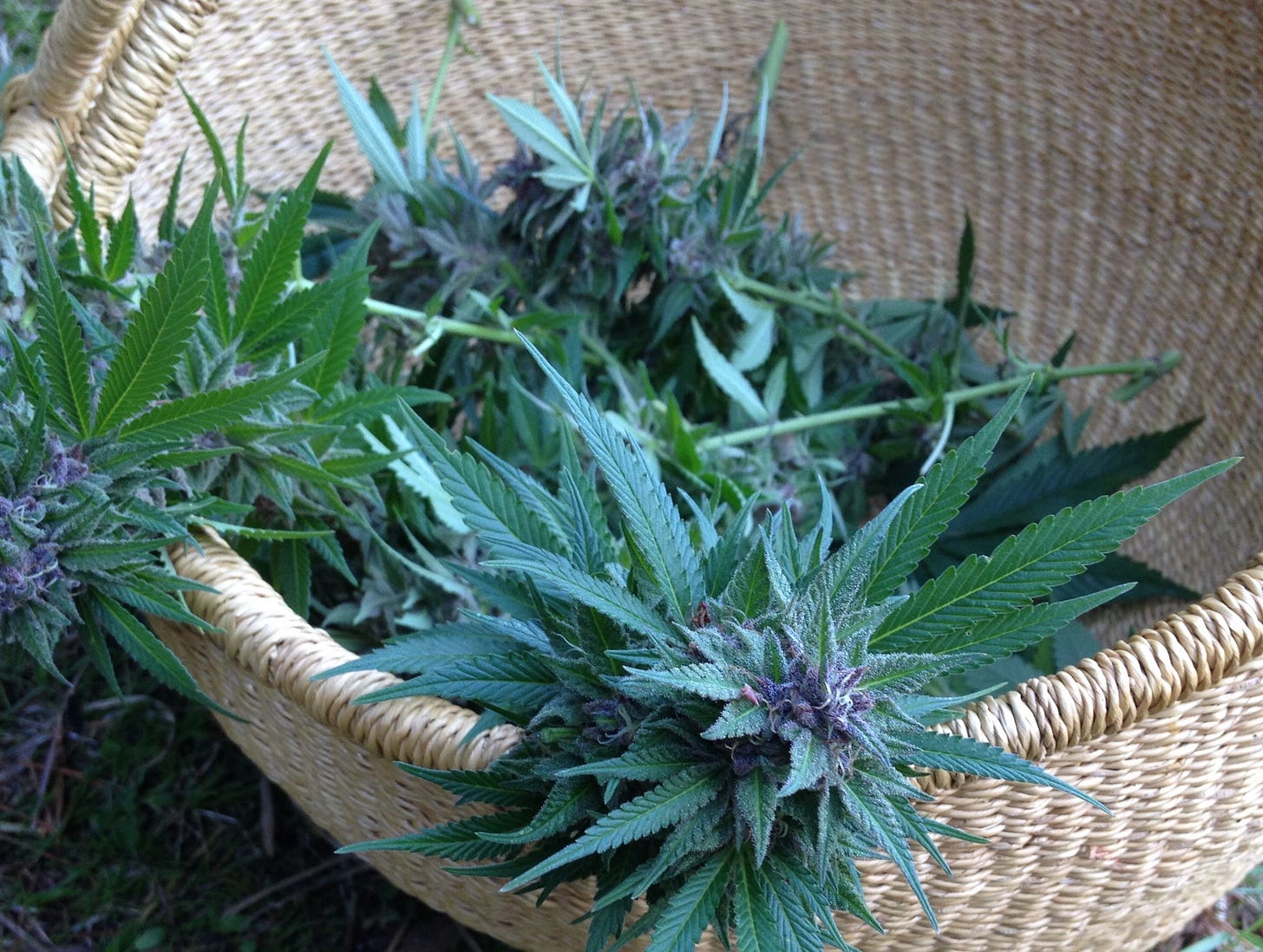Cannabis: Queen of the Herbs Part I
Meet cannabis, a powerful healing ally for millions around the globe. What treasures can we glean from this Queen?
Cannabis has been growing in our garden since 2015, when it was legalized in Oregon for recreational use. That year gave us much of the highly prized cannabis flowers, so much in fact, we were overwhelmed with the task of drying and preserving it. Unfortunately, due to some rookie mistakes, we lost about half of that harvest to rot and mold. Thanks to those early experiences I learned a thing or two about keeping this special plant in my garden. This year, I am proud to say I have more of this medicine growing from seeds I started right on our deck!
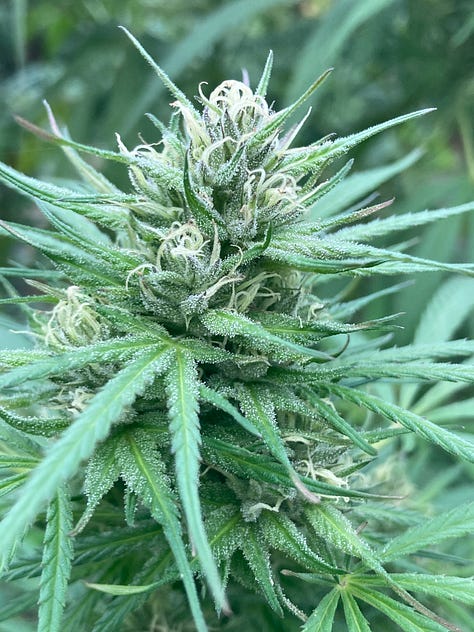
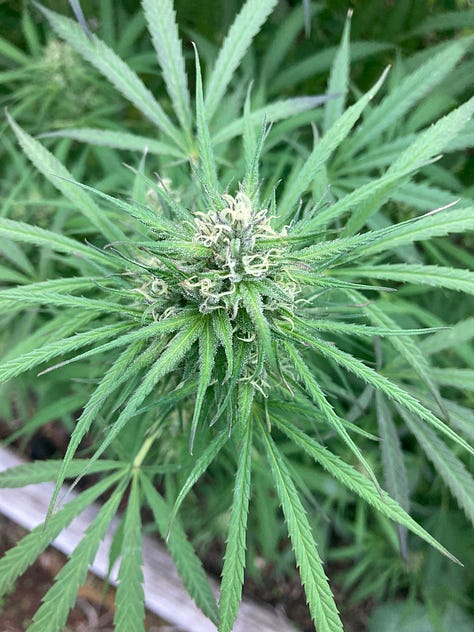
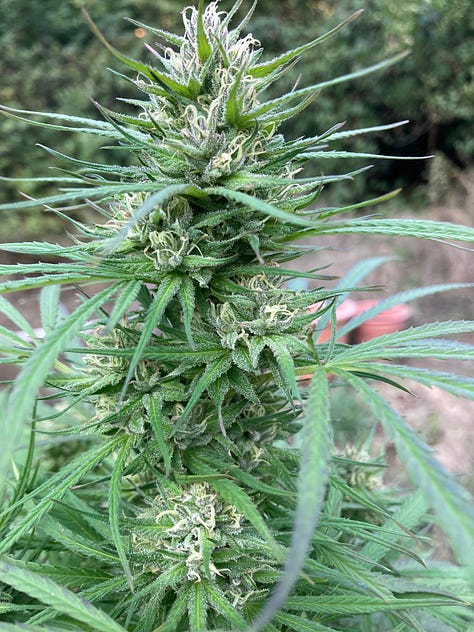
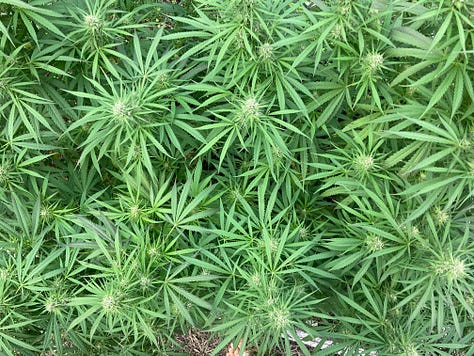

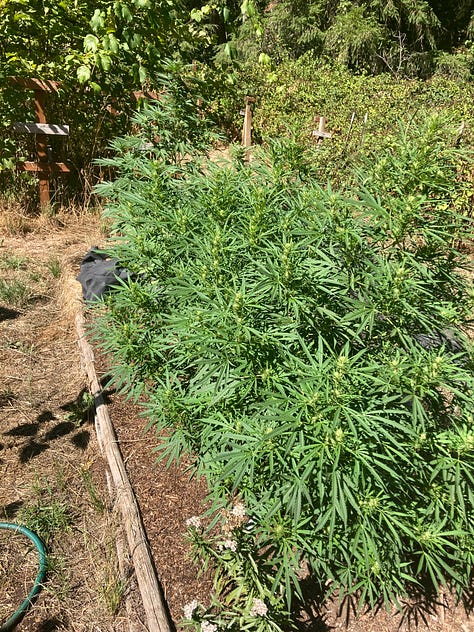
I have named cannabis as “Queen of the Herbs,” because this plant can be highly psychoactive, which is one of her special powers, and like the Queen on the chess board, there’s almost no limit to her abilities. Cannabis has been used in a variety of forms throughout history. In ancient China as well as early America, hemp was used as a fiber. It’s mentioned as a medicinal herb in one of the oldest Chinese texts. Cannabis was turned into hash in cultures from North Africa and the Middle East where it was used for social ritual, to counter to fatigue, and as a visionary tool. Similarly in India and the Himalayan regions, cannabis was and is ubiquitous as a smoke and edible, known as ganja and bang respectively. Today, cannabis legalization is spreading across the globe, giving increased access to millions of people. Let’s dive in and see what more we can learn from this Queen of the Herbs. An apothecary unto itself.
It is thought that the cannabis plant first evolved in the steppes of central Asia and spread to all corners of the world from there. The wild plant is a bushy and squat dioicous annual. Being dioicous means there are separate female and male plants that must reproduce to make seeds. Cannabis sativa is in the cannabinaceae family along with only one other plant: hops (humulus lupulus). The males pollinate the females via the wind and that pollen sticks to the highly resinous flowers. To get the flowers to grow large those males need to be identified early, and gotten rid of, because the moment that pollen hits the flowers the plant stops putting energy into the flower and into making seeds (the plants babies). No one wants seeds in their weed! Today growers rely on clones taken from cuttings of female plants.
It’s all about the terps:
Most people who are familiar with cannabis will tell you that the terpenes are very important in distinguishing one strain from another. These compounds often give off a pleasant (or not so pleasant for some) skunky smell, with a variety of secondary scents. For example, one strain may contain limonene, which smells like citrus and has an uplifting, often anti-depressive effect, or pinene, which smells like pine, and is associated with reductions in stress and anxiety. Many cannabis strains are named after the most prominent of these terpenes, such as pineapple express, sour diesel, gelato, blueberry, and super lemon haze, etc.
Medicinal compounds known as cannabinoids:
Another way to understand cannabis is by learning about some of the known cannabinoids. There are over 400 constituents in the cannabis plant, and over 70 cannabinoids, of which THC was the first to be discovered. Other known cannabinoids are CBD, CBN, and CBG, each with a specific helpful action in the body. These cannabinoids bind to internal receptors, known as CB-1 and CB-2, that make up the endocannabinoid system. The endocannabinoid system is associated with safety and pleasure and helps us to regulate various bodily functions as well as our emotions.
Be aware that many of the products sold at cannabis dispensaries use extracts of CBD or THC, often by using chemical solvents to isolate a specific compound. This isolate is then added to edibles and other products. However, these products do not include the whole plant and all the other constituents, terpenes, and most importantly, the earth energy of the plant. Cannabis has been turned into a supplement, and in this form, there may be some positive outcomes, but we are missing out on the entourage effect provided by both the active constituents and the complex and subtle elements the whole plant offers.
Cannabis breeds:
There are two major strains of cannabis: indica and sativa. Sativas are native to the tropics. They are tall gangly plants, with narrow leaves. Their potency tends to be lower than indica strains and are known to be more suited for daytime use, giving some energy, and good for combating anxiety or increasing creativity. According to Michael Pollan’s book, The Botany of Desire, most of the cannabis coming into the US pre-1980’s were probably Sativa strains. Indica’s are native to Central Asia, or possibly China, and are known to produce a more intense “stoned” feeling and “couch lock.” These strains are recommended for helping those suffering from nausea, loss of appetite, and muscle pain. They are especially suited to those undergoing cancer treatment and seeking relief from often debilitating side-effects.
Cannabis is a power plant and must be treated with respect. Give thanks to this plant and start low and slow. A too high dose can be very unpleasant. Ask questions and do some reading if this is a new plant for you.
In part II of this series, I’ll dive in deeper into the medicinal powers that have held human attention for at least the last 40,000 years. We’ll discuss why cannabis is a power plant and how to imbibe safely. Stay tuned for part II of Cannabis: Queen of the Herbs in the next Ursula’s Garden newsletter.





